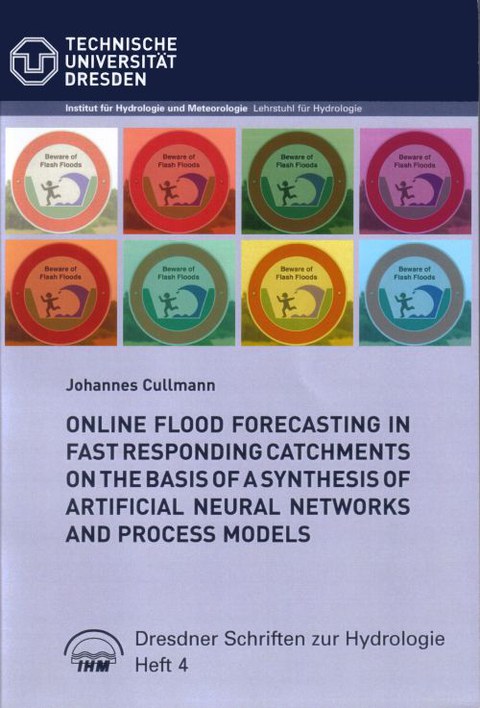Booklet 4
Online flood forecasting in fast responding catchments on the basis of a synthesis of artificial neural networks and process models
by Johannes Cullmann (2006)
Abstract: A detailed and comprehensive description of the state of the art in the field of flood forecasting opens this work. Advantages and shortcomings of currently available methods are identified and discussed. Amongst others, one important aspect considers the most exigent weak point of today’s forecasting systems: The representation of all the fundamentally different event specific patterns of flood formation with one single set of model parameters. The study exemplarily proposes an alternative for overcoming this restriction by taking into account the different process characteristics of flood events via a dynamic parameterisation strategy. Other fundamental shortcomings in current approaches especially restrict the potential for real time flash flood forecasting, namely the considerable computational requirements together with the rather cumbersome operation of reliable physically based hydrologic models. The new PAI-OFF methodology (Process Modelling and Artificial Intelligence for Online Flood Forecasting) considers these problems and offers a way out of the general dilemma. It combines the reliability and predictive power of physically based, hydrologic models with the operational advantages of artificial intelligence. These operational advantages feature extremely low computation times, absolute robustness and straightforward operation. Such qualities easily allow for predicting flash floods in small catchments taking into account precipitation forecasts, whilst extremely basic computational requirements open the way for online Monte Carlo analysis of the forecast uncertainty. The study encompasses a detailed analysis of hydrological modeling and a problem specific artificial intelligence approach in the form of artificial neural networks, which build the PAI-OFF methodology. Herein, the synthesis of process modelling and artificial neural networks is achieved by a special training procedure. It optimizes the network according to the patterns of possible catchment reaction to rainstorms. This information is provided by means of a physically based catchment model, thus freeing the artificial neural network from its constriction to the range of observed data – the classical reason for unsatisfactory predictive power of netbased approaches. Instead, the PAI-OFF-net learns to portray the dominant process controls of flood formation in the considered catchment, allowing for a reliable predictive performance. The work ends with an exemplary forecasting of the 2002 flood in a 1700 km² East German watershed.

